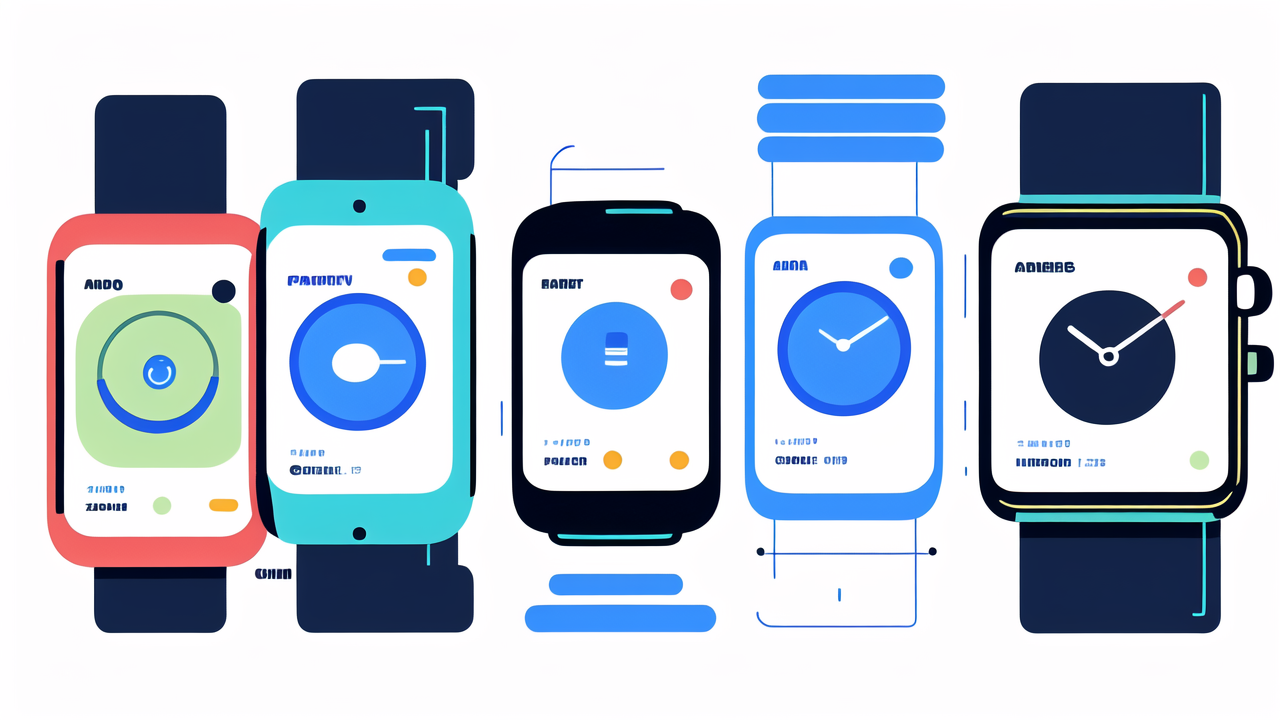Understanding the Smart Watch Evolution: From Simple Timepieces to Multifunctional Devices
The Origins of the Smart Watch Concept
The smart watch concept began with simple digital watches in the 1970s. These early models could do basic math and store small amounts of data. As technology advanced, watches gained more features. The 1980s saw watches with built-in calculators and even tiny games. By the 1990s, some watches could connect to computers. This laid the groundwork for today's smart watches. The idea of a wrist-worn computer became more real with each passing decade. Early attempts at smart watches were bulky and had limited functions. But they showed the potential for wearable tech. The dream was to have a powerful computer on your wrist. This vision drove innovation in the field of wearable technology.

Milestones in Smart Watch Technology and Market Growth
The smart watch market has seen rapid growth and innovation. Key milestones include:
- 2012: Pebble launches via Kickstarter, showing high demand for smart watches
- 2013: Samsung releases Galaxy Gear, bringing a major tech player into the market
- 2014: Apple unveils the Apple Watch, setting new standards for design and function
- 2015: Android Wear (now Wear OS) launches, offering a platform for various brands
- 2017: Fitbit enters the smart watch market with the Fitbit Ionic
- 2019: Global smart watch shipments exceed 100 million units
Each milestone brought new features and improvements. Batteries got better, screens became sharper, and health tracking got more accurate. The market grew as more people saw the value of smart watches. Prices also became more diverse, making smart watches accessible to more consumers. This growth shows no signs of slowing down.
How Consumer Demand Shapes Smart Watch Development
Consumer needs and wants drive smart watch innovation. Users demanded longer battery life, so companies focused on power efficiency. People wanted better health tracking, leading to more advanced sensors. The desire for style pushed companies to create more attractive designs. Waterproofing became standard as users wanted to wear their watches while swimming. Voice commands improved as people sought hands-free operation. Each new feature or improvement comes from listening to what consumers want. This responsiveness keeps the smart watch market dynamic and growing. Companies that best meet consumer demands often lead the market. As needs change, smart watches will continue to evolve.
The Impact of Smart Watches on the Health and Wellness Industry
Advancements in Fitness and Activity Monitoring
Smart watches have revolutionized fitness tracking. They offer features like:

- Step counting
- Heart rate monitoring
- Sleep tracking
- GPS for run tracking
- Workout detection
- Calorie burn estimation
These features help users stay active and monitor their progress. Many watches now offer personalized workout plans. They can suggest when to increase intensity or take a rest day. Some can even detect falls and call for help if needed. Water resistance allows for swim tracking in many models. Advanced sensors can measure blood oxygen levels and even take ECGs. These features make smart watches powerful tools for fitness enthusiasts and casual users alike. They provide data that was once only available in labs or doctor's offices.
Integrating Health Data: Opportunities and Challenges
Smart watches collect vast amounts of health data. This data can be very useful for users and healthcare providers. It can help spot trends and potential health issues early. Many watches can now sync data directly with healthcare systems. This gives doctors a more complete picture of a patient's health. However, this integration also brings challenges. Privacy concerns are a major issue. There are questions about data security and who can access the information. There's also the challenge of interpreting all this data correctly. Not all healthcare providers are trained to use this information effectively. Despite these challenges, the potential benefits are huge. Smart watches could help predict and prevent health issues before they become serious.
The Role of Smart Watches in Preventive Healthcare
Smart watches are becoming important tools in preventive healthcare. They can:
- Remind users to move regularly
- Track long-term health trends
- Alert users to irregular heartbeats
- Encourage better sleep habits
- Help manage stress through breathing exercises
These features help users take a more active role in their health. By providing real-time data, smart watches make it easier to make healthy choices. They can motivate users to be more active and mindful of their health. Some insurance companies now offer incentives for using smart watches. This shows the growing recognition of their value in preventive care. As technology improves, smart watches may be able to detect more health issues early. This could lead to better outcomes and lower healthcare costs overall.
Smart Watches in the Workplace: Enhancing Productivity and Connectivity
The Integration of Smart Watches with Office Ecosystems
Smart watches are finding their place in modern offices. They integrate with various office tools and systems. For example:

- Calendar apps send meeting reminders right to your wrist
- Email notifications let you quickly see important messages
- Voice assistants help schedule meetings or set reminders
- Task management apps keep you on track throughout the day
- Time tracking features help with project management
This integration makes it easier to stay organized and productive. You can check important info without pulling out your phone. This can be less disruptive in meetings or while working. Many watches also offer customizable watch faces. These can display the most relevant work info at a glance. As more offices adopt smart technology, watches will likely play a bigger role. They could become central to how we manage our work day.
Enhancing Work-Life Balance with Wearable Technology
Smart watches can help improve work-life balance. They make it easier to manage both work and personal tasks. Features like do-not-disturb modes help separate work and personal time. You can set your watch to only show urgent notifications after hours. This helps reduce stress and prevents work from taking over your life. Many watches also have wellness features. These remind you to take breaks, stand up, or do breathing exercises. Such features promote better health habits during the workday. Some watches can track stress levels. This data can help you identify and manage work-related stress. By providing this balance, smart watches can lead to happier, healthier workers.
The Future of Smart Watches in the American Workplace
The role of smart watches in American workplaces is likely to grow. We may see more specialized work-focused smart watch apps. These could help with tasks like time management or team communication. Improved security features may make watches more acceptable in high-security jobs. We might see watches replace employee ID badges or access cards. As remote work becomes more common, watches could help manage distributed teams. They could provide quick ways to check in or share status updates. Health features may become part of workplace wellness programs. Companies might use watch data to create healthier work environments. As smart watches evolve, they'll likely become as common in offices as smartphones are today.




Leave a comment
This site is protected by hCaptcha and the hCaptcha Privacy Policy and Terms of Service apply.